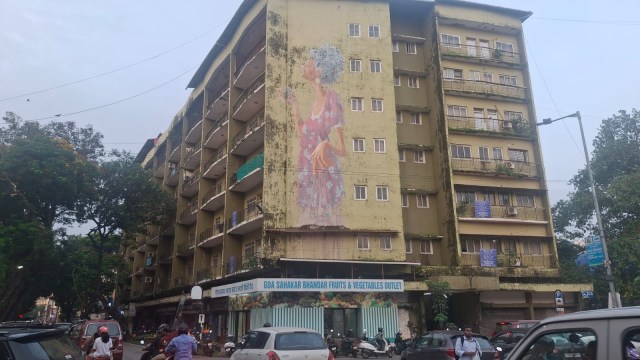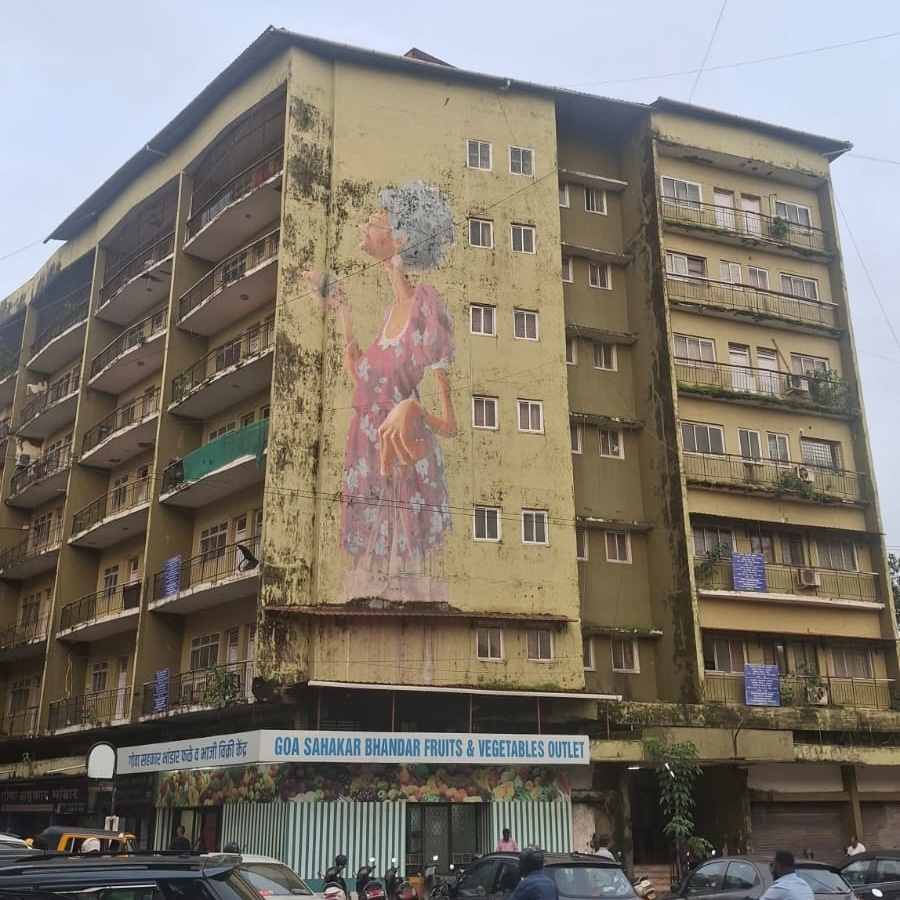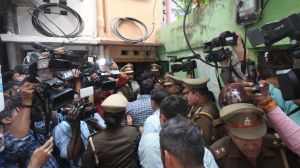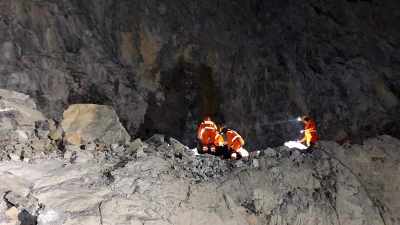The enduring legacy of Junta House, once Goa’s tallest building now deemed unsafe
Inaugurated in 1966, the Junta building is more than just a tall building. Now declared unsafe, the ‘mixed use’ building once housed important government offices and has been the site of several strikes and agitations
 The building was opened in 1966 in Panaji. (Express Photo)
The building was opened in 1966 in Panaji. (Express Photo)“It was the tallest building in Goa when it came up and perhaps only the second building with a lift,” recounts historian Prajal Sakhardande.
“We used to go there just to see the lift.”
‘Junta House’ – Goa’s tallest building when it was built six decades ago – and one of its earliest skyscrapers, has been declared ‘unsafe’ and is set to be vacated.
In an order, Ankit Yadav, collector and chairperson of the district disaster management authority of North Goa, said last week that based on a recent structural audit report, the building is “structurally vulnerable” and poses a “safety hazard” due to considerable deterioration and retrofitting is not economically feasible. The collector has ordered a complete eviction of the entire Junta House building within a month.
The order marks an end of an era for the city’s residents. The building, which has a mural of an elderly woman – ‘Aunty Rosy’ in a red dress holding a grocery bag in one hand and a coconut in the other – on its façade, evokes memories from when it was first constructed.
For more than two decades, Dr Mahendra Tamba lived and worked in a building opposite the Junta House. “Till 1984, Madan Lal Sadan and Junta House were the only skyscrapers in Panaji. The Regional Transport Office (RTO) used to be on the first floor. I remember they used to take the test for learner’s licence on the road between Akbar Ali Building and Junta House,” he said.
“It is a landmark building and has heritage value. It must be preserved,” said Sakhardande.
Located in the heart of capital Panaji along the junction of 18th June Road and Swami Vivekanand Road, the ‘modernist’ six-storey building was constructed sometime in early 1960s around the time Goa was liberated from Portuguese rule. The government building was inaugurated by the then Lieutenant Governor of Goa, Daman and Diu KR Damle on August 15, 1966 during the tenure of Goa’s first chief minister Dayanand Bandodkar. The iconic edifice was once the administrative citadel and symbolized a transformative and modern vision of Goa post liberation.
 The building was opened in 1966 in Panaji. (Express Photo)
The building was opened in 1966 in Panaji. (Express Photo)
The ‘mixed use’ building housed important government offices, accommodations for bureaucrats and heads of government departments, commercial establishments, a performing arts centre and a public astronomical observatory. In its heyday, it stood the highest across Panaji’s urban landscape and bore witness to popular agitations. For many, it was the place where their marriages were registered. In the past few decades since, Junta House — one of Panaji’s most recognisable buildings — is a derelict.
According to historian Dr Maria de Lourdes Bravo da Costa, the land where the building came up belonged to the ‘Junta Do Comercio Externo’ [Board of External Trade], an autonomous department of the government during the Portuguese times which used to grant import licenses.
“They had their godown there, which still exists beside the building. So, when it was constructed, the building took the same Portuguese name ‘Junta’,” she said.
A government official, requesting anonymity, said, “The land where the building was built had offices and godown of ‘Junta Do Comercio Externo’. So, it was named Junta House. There was a tussle too with some wanting the building to be named ‘Janata’ House, which means ‘building of the people’.”
Among the government departments that operated from the building include the Department of Civil Supplies and Consumer Affairs, Directorate of Official Language, Directorate of Planning, Statistics and Evaluation, Office of Commissioner Labour and Employment, Office of Civil Registrar-cum-Sub-Registrars, Goa Forest Development Corporate Limited and Goa State Consumer Disputes Redressal Commission. A majority of government offices have since been moved, while a handful are operating in a limited capacity.
With the Directorate of Transport and Labour and Employment Department offices operating from the building, its central location within the city lent itself to be the site of several strikes and agitations. Trade union leaders would often camp near the building’s staircase and sit on a hunger strike.
 The sixth floor of the premises, which housed the Swami Vivekanand Society, was the most famous. (Express Photo)
The sixth floor of the premises, which housed the Swami Vivekanand Society, was the most famous. (Express Photo)
In December 1978, student unions, who had been demanding a 50 percent concession in bus fare, gheraoed the Regional Transport Office (RTO) in the Junta House building, in what came to be known as the “half ticket” agitation, said Sakhardande.
“The agitation, in a way, began from the building,” he added.
The sixth floor of the premises, which housed the Swami Vivekanand Society, was the most famous. The state-of-the-art Swami Vivekanand Hall was the epicentre of all cultural events — theatre, Marathi and Konkani dramas, classical music, dance classes and lectures.
“It was the first performance art centre and a cultural hub. Kala Academy had not come up at the time. With the exception of the Institute Menezes Braganza Hall, it was the only hall where people could go to see theatre, music and dance performances. Musicians of national repute have performed there. Yoga was also taught there in later years,” Dr Tamba said.
Prakash Kamat, a member of the State Advisory Board on Disability, said, “My wedding reception took place on January 26, 1993 at Swami Vivekanand Hall in Junta House.”
“Many government offices in the building involved a public interface. People would go there to get registration certificates of births, deaths and marriages or pay a traffic challan. So, there is some nostalgia associated,” added Kamat.
For more than three decades, a public astronomical observatory has been operating from the building’s terrace, offering locals and tourists a “tour of the cosmos” and constellations, planets, star clusters and celestial phenomena through telescopes. The observatory was set up by the Association of Friends of Astronomy (AFA) in 1990 and is supported and funded by the Goa government.
Satish Nayak, President Public Astronomical Observatory and AFA said the association was founded by renowned historian and bureaucrat Percival Noronha in 1982.
 The plaque at the entrance of Junta House. (Express Photo)
The plaque at the entrance of Junta House. (Express Photo)
“Junta House was the tallest building at the time. It offered an unhindered view of the sky and it had a lift, which was rare. People, especially from rural areas, would come in vehicles to see the building and the lift. Altinho was not well illuminated then…So, the open terrace of Junta House was an ideal place for observations. The government recognized the association and formally handed over the terrace under the Department of Science and Technology and that’s how the observatory was set up,” he said.
Architect Analia da Costa, who wrote a dissertation titled ‘Expressing Identity Through Architecture in Post 1961 Goa’ said the design of the Junta House is ‘modernist’.
“The façade had horizontal and vertical bands, horizontal balconies and a concrete structure. It had a flat roof and was on a much bigger scale, which was uncommon for Goan structures at the time. The elements in the building seemed heavily influenced and similar to the architecture of other buildings being constructed by the Central Public Works Department at the time, which was modernist and of a forward-looking India,” she said.







